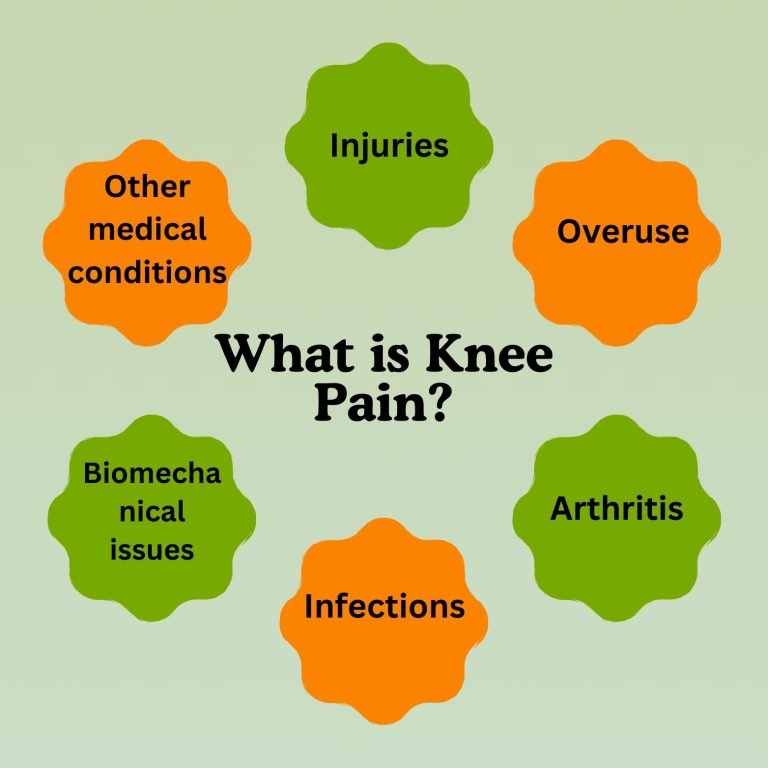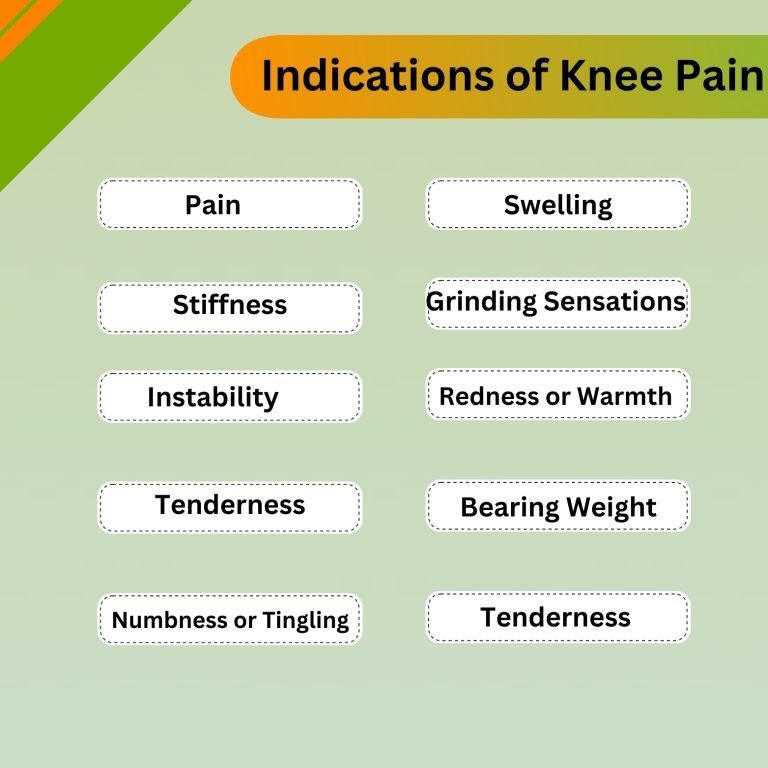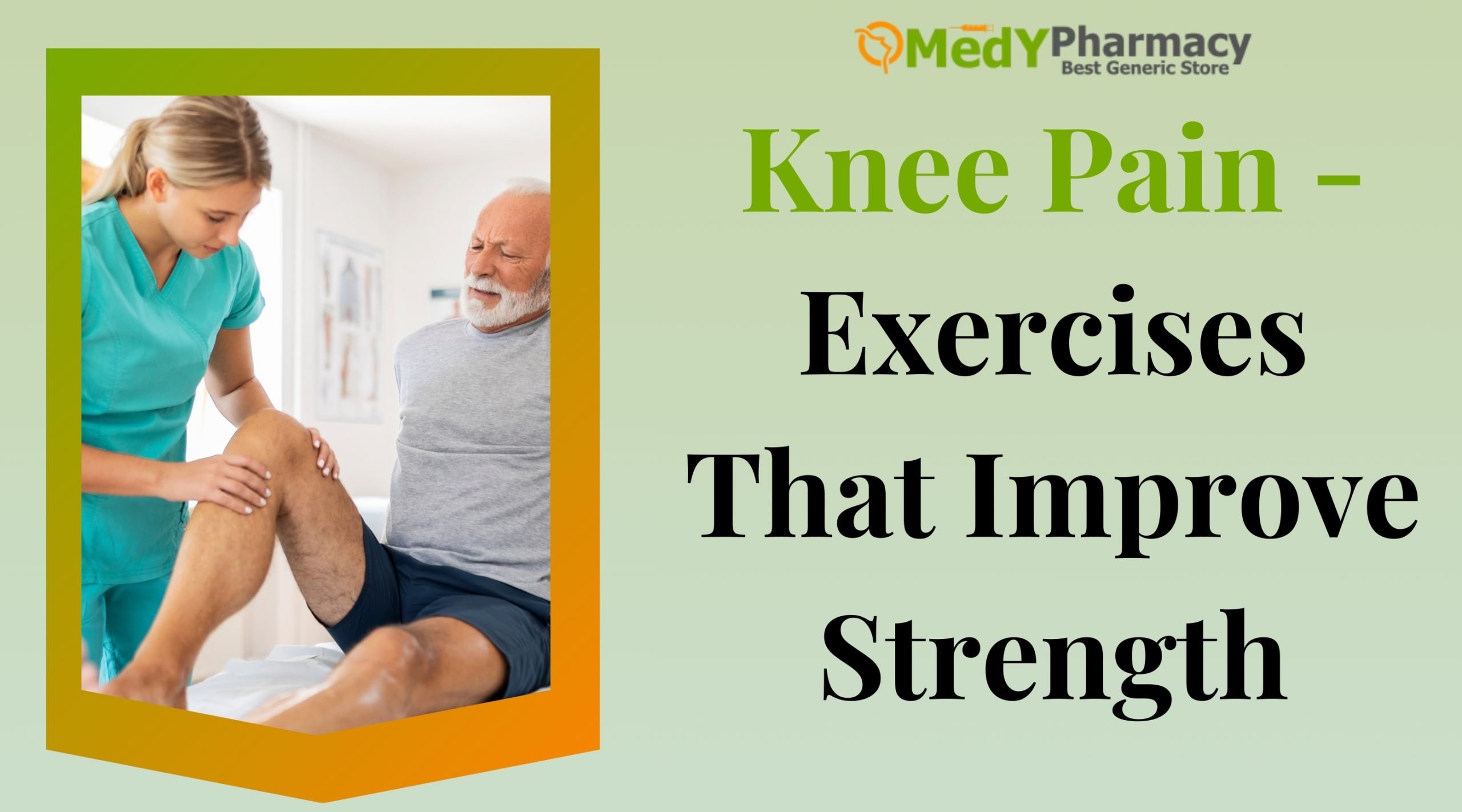Introduction:
One of your body’s most vital joints is your knee Pain. It helps us move about, extend our legs, and be functional in the many things we perform every day. It is the most important part of the legs.
This is also very significant since it supports our legs as we lift weights and perform other everyday tough activities.
However, this is frequently observed in the elderly. This is one of the most frequent causes of movement and locomotor impairments in older adults, according to research studies. Even bone diseases like rheumatoid arthritis and osteoporosis can cause knee pain.
However, overcoming knee pain is also not difficult. You may increase the strength and range of motion of your knee joints by performing basic knee exercises and mild stretching.
Anyone already experiencing knee pain would be well advised to perform such exercises.
Exercises for knee pain are always advised by physicians since they are natural and have no negative health effects.
Several exercises for knee pain will be discussed in this article, with a focus on six that are portable. Therefore, it doesn’t take much time or effort to perform these exercises, whether you’re working from home or even in your workplace.
The muscles supporting your knee joint can be strengthened with low-impact activities and gentle stretching. Stretch your quadriceps, hamstrings, heel, and calf first, then on to half squats, calf lifts, and other leg lift variants.
What is Knee Pain?
Overuse, arthritis, accidents, and underlying medical disorders are some of the reasons for this prevalent knee joint stiffness or soreness. Swelling, stiffness, dull or intense pains, or trouble moving are some of its symptoms.
The reason for knee pain will determine the best course of action, which may include rest, physical therapy, medication, or surgery. Exercise, medication, and lifestyle modifications are frequently used in conjunction to manage knee pain to reduce symptoms and enhance joint function.

- Injuries
- Ligament injuries
- Meniscus tears
- Fractures
- Tendonitis
- Overuse
Patellar tendinitis and bursitis are two disorders that can result from repetitive physical activity that stresses or strains the knee joint, especially when there is little rest.
- Arthritis
- The gradual deterioration of cartilage is known as osteoarthritis.
- Rheumatoid arthritis is an autoimmune disease that can lead to inflammation in the joints.
- Gout (crystal accumulation of uric acid)
- Infections
Pain, swelling, and redness are uncommon symptoms of a knee joint infection.
- Biomechanical issues
Over time, abnormalities in alignment, posture, or gait can put stress on the knee joint and result in discomfort.
- Other medical conditions
Additionally, knee pain may be caused by conditions such as iliotibial band syndrome, patellofemoral syndrome, or baker’s cysts.
From little discomfort to severe, incapacitating agony, this can range widely in intensity. Depending on the reason, movement, exercise, or even relaxation may make it worse.
The causes of knee pain can determine the best course of treatment, which may include rest, ice, physical therapy, medication, injections, or, in more extreme situations, surgery.
Numerous Factors Might Cause Knee pain
When the kneecap and thigh bone are under excessive stress, a runner’s knee may develop.
The cartilage between your shin and thigh bones can tear, resulting in meniscus tears, which can hurt, catch, or lock.
Your knee’s cartilage deteriorates with osteoarthritis, causing discomfort and stiffness.
Patellar tendonitis, which frequently affects athletes who jump a lot, is caused by repetitive strain on the tendon that connects your kneecap to your shin bone.
Severe injuries can cause ligament rips, harming the knee’s stabilizing ligaments, particularly the interior and outside ligaments.
All ages might be affected by knee pain. Runner’s knee, also known as patellofemoral pain syndrome, is a common knee ailment among athletes. Apart from being prevalent among athletes, knee discomfort can also be an issue for those with arthritis.
Avoiding activity when knee pain strikes may seem like a good idea, but it’s not always the best course of action. Exercises that provide the knee more support can help reduce current knee pain and avoid further discomfort or damage.
A healthcare provider should be consulted by those who are experiencing this before beginning any workouts.
This article describes the advantages of knee-strengthening exercises. Additionally, it outlines and describes this that might help strengthen the knee and reduce discomfort.
You’re Plan of Action for Osteoarthritis
Without putting undue strain on the joints, low-impact exercises like cycling, swimming, or walking can help increase muscular strength, decrease stiffness, and improve joint flexibility.
Support and a reduction in joint stress can be obtained by strengthening the muscles around the injured joint.
Joint flexibility can be maintained or improved using range-of-motion exercises. Using ice packs or a cold compress might help dull severe discomfort and minimize swelling.
Stiffness and muscular relaxation can be achieved with warm compresses, heating pads, or warm baths.
To assist in strengthening the muscles around the joint, increase the range of motion, and lessen discomfort, a physical therapist can create an exercise program. An occupational therapist might suggest joint protection methods, adaptive equipment, and adjustments to everyday tasks to lessen joint stress.
A mix of lifestyle modifications, physical therapy, pain management techniques, and, if required, surgical procedures are needed to manage osteoarthritis. Working together with healthcare experts to create a customized strategy that addresses certain symptoms and requirements is crucial because every person’s experience with OA is different. People with OA can retain a good quality of life, lessen discomfort, and greatly improve joint function by remaining proactive.
Indications of Knee Pain
The origin of the soreness behind your knees also affects the symptoms. For example, deep vein thrombosis and other serious problems are brought on by a sore calf and need immediate medical care.
Additionally, osteoarthritis patients experience pain when they bear weight. When sitting for extended periods or getting out of bed in the morning, the knee feels stiff.
Additionally, discomfort behind the knees is experienced by those who have PCL injuries, particularly when kneeling, walking, or jogging. In any case, some signs of knee pain are as follows:

- Pain
The reason for the pain may be at the front, back, or sides, or it may be felt directly around the knee joint.
Both severe and mild pain are possible with knee pain.
Discomfort with movement: Bending, straightening, or bearing weight on the knee may make the discomfort worse.
Even when you’re not moving, you may experience knee pain due to certain disorders, including severe arthritis or inflammation.
- Swelling
A typical symptom is swelling around the knee, particularly if there is inflammation or an injury. The knee may have a bloated appearance or feel puffed.
Chronic swelling may be a sign of osteoarthritis or bursitis, but acute swelling may be caused by an injury (such as a meniscus tear or ligament rupture).
- Stiffness
One of the most important signs may be a sensation of stiffness or decreased knee range. Bending the knee or fully straightening the leg may become challenging as a result.
Additionally, stiffness may worsen after prolonged sitting or in the morning.
- Grinding Sensations
Some people hear popping or clicking sounds as they move their knees, especially when they bend or straighten.
When the cartilage has deteriorated due to osteoarthritis or meniscus tears, this might happen.
- Instability
Ligament damage or weakening in the muscles around the joint may be the cause of a knee that feels weak or gives way, as though it would buckle under weight.
Walking or climbing stairs might cause some people to feel as though their knee is “shifting” or unstable.
- Redness or Warmth
It might be a sign of arthritis, infection, or inflammation if the knee joint is red or feels warm to the touch.
Gout or rheumatoid arthritis frequently results in knee warmth and redness.
- Tenderness
Certain parts of the knee, including the patella (kneecap) or the sides of the knee, may be sensitive to the touch.
Conditions such as osteoarthritis, bursitis, and patellar tendinitis can cause tenderness.
- Bearing Weight
If this is severe, you can find it difficult to stand or walk for extended periods.
Your gait may change or you may limp to prevent applying pressure to the sore spot.
- Numbness or Tingling
While less often, certain disorders might result in tingling or numbness around the knee or down the leg, particularly if nerves are involved (e.g., herniated discs in the spine or knee injuries impacting nerves).
- Tenderness
A fluid-filled swelling that develops behind the knee, known as a Baker’s cyst, maybe the cause of the pain behind the knee.
This ailment may result in pain while bending or straightening the leg, as well as tightness or a feeling of fullness behind the knee.
Typical Causes about Symptoms:
- Pain, stiffness, edema, and reduced range of motion are frequently made worse by activity and made better by rest.
- Redness, swelling, warmth, and involvement of both symmetrical joints.
- Sharp pain that comes on suddenly, edema, instability, and trouble moving.
- The knee may snap or click, hurt when you twist or rotate it, swell, or have trouble straightening it.
- Tenderness, warmth, and swelling above the bursa
- Knee pain at the front, particularly when running or leaping.
- Abrupt, intense knee pain, edema, redness, and warmth usually happen in one joint and at night.
Seeking medical advice is crucial if this is severe, ongoing, or accompanied by substantial swelling, bruises, or trouble walking. If there are indications of infection or if the knee seems unsteady or locked in place, you should see a doctor every once. A physician will assess your symptoms, maybe do imaging tests, and suggest a course of therapy.
Additional Exercises for Knee Pain
Consider incorporating low-impact workouts into your program after you’ve strengthened your knees. Generally speaking, these workouts are less taxing on your joints than high-impact ones like jogging or leaping.
- Yoga
- Tai Chi
- Elliptical Machine
- Swimming
- Stationary Cycling
- Water Aerobics
- Walking
Stretches for Knee Pain
You may increase your knee joint’s range of motion and flexibility by performing lower-body stretching activities. This may facilitate knee movement.
Spend at least 5-10 minutes warming up before stretching. Warming up with low-impact exercises like walking, elliptical machine use, or stationary bike riding is an excellent idea.
After warming up, perform the stretches listed below, then repeat them following the knee-strengthening activities. Try these exercises and stretches 4-5 times a week at the very least.
- Heel and Calf Stretch
Position yourself in front of a wall. As far back as you can comfortably go, put your hands on the wall. Your knees should be slightly bent, your heels flat, and the toes of both feet pointed forward.
For 30 seconds, lean into the stretch and hold it. The stretch should be felt in your rear leg. Switch legs and do it again. Perform this stretch on each leg twice.
Place one leg forward while keeping your torso upright, then bend your knees to place less weight on the knee joint.
In addition to people with knee pain, this exercise would be highly helpful for people with calf muscle and ankle pain.
Put the step back after holding yourself in the stretched-out front leg posture for a few seconds until your calf and knee joints feel somewhat extended.
Next, repeat the same with the opposite leg. Maintain your routine of performing these exercises at least 20 times per day.
After practicing this for a few weeks, you will notice that the knee pain has largely disappeared. The forward stretch, which is another name for this type of heel and calf stretch exercise, would relieve the discomfort by placing the majority of the lower body weight on the knee joint.
- Quadriceps Stretch
Your quadriceps, which are the muscles at the front of your thighs, are the focus of this stretch. You may increase the flexibility of your quadriceps and hip flexors by performing this exercise.
The quadriceps stretch is another easy exercise that may be performed anywhere to relieve knee pain. You may perform this exercise without even using a wall for assistance.
Simply stand up straight and make sure your legs and upper body are extended in a straight line when performing this exercise.
Hold the top of your knee with your side hand as you fully bend the knee joint backward at a 180-degree angle. After a few seconds of holding yourself in this posture, repeat with the opposite leg.
- Use a chair for support or stand close to a wall.
- Your foot will travel up toward your glutes if you bend one knee.
- Take hold of your ankle and pull it as comfortably as you can toward your glutes.
- Hold for 30 seconds.
- Go back to the beginning and switch legs.
- Do this twice on each side.
- Hamstring Stretch
From the rear of your leg to the base of your glutes, you should feel this stretch. Flexing your foot might cause your calves to feel stretched.
Use a mat to provide more padding beneath your back for this stretch.
With both legs straight, lie on the floor or mat. If it’s more comfortable, you can also place your feet flat on the floor and bend both knees.
Then raise one leg off the ground. To feel a little stretch, place your hands behind your thigh but behind your knee. Then, slowly draw your knee toward your chest. This should not hurt.
Pause for 30 seconds. Reduce and switch legs. Twice on each side, repeat.
- Half Squat
You may develop your quadriceps, glutes, and hamstrings without putting undue strain on your knees by performing half squats.
Your feet should be shoulder-width apart when you perform a standing squat. For balance, place your hands on your hips or in front of you.
Slowly stoop down about 10 inches while maintaining a straight line. This is where a complete squat starts.
Take a moment to pause, then push through your heels to stand up. Perform two to three 10-repetition sets.
An excellent workout that helps with both knee and hamstring pain recovery is the half squat. It also helps you lose fat from your midsection.
You only need to stand upright before beginning this workout. Your hands should then be perpendicular to your chest as you bend your hips down. It’s not necessary to completely squat; just be sure to perform a half squat each time.
This exercise is beneficial because it strengthens the knee joints and relieves discomfort by applying the lower body weight directly to them.
- Calf Raises
Your calf muscles and the back of your lower legs will both get stronger with this workout.
Your feet should be shoulder-width apart. Hold onto the back of a chair for support, or place yourself near a wall.
Move both of your heels up off the floor until you are standing on your balls.
Lower your heels gradually to the beginning position. With this exercise, control is key to building stronger calf muscles. Perform two to three 10-repetition sets.
Another easy workout that requires you to stand upright and try to elevate your upper body while raising your heels and extending your body upward as far as you can is the calf raises and stretching exercise.
To help reduce heel, calf, and knee pain, perform this exercise at least a few times a day.
- Hamstring Curl
The standing hamstring curl works your glutes and hamstrings. Maintaining the stability of your hips and upper body also demands core strength.
Stand with your back to a wall or lean on a chair. You should space your feet hip-width apart.
Elevate one foot, elevate your heel toward the sky, and bend your knee. For 5 to 10 seconds, hold. Unwind and return to the initial position. Perform two to three sets of ten reps for every leg.
- Leg Extensions
Strengthening your quadriceps using your weight instead of a weighted machine relieves additional strain on your knees.
Sit erect in a chair. Place your feet hip-width apart and flat on the ground.
Keep your eyes forward, tighten your thigh muscles, and lift one leg as high as you can without lifting your buttocks off the chair.
After pausing, return to the initial position. Perform two to three sets of ten reps for every leg.
You may perform another really easy workout while sitting on a chair: the leg extension. You can easily accomplish this even if you are seated at your desk in your office. To perform this exercise, you must first sit up straight.
Attempt to raise one leg at a time until it is perpendicular to your waist. Place your leg back down after holding the posture for a few minutes. At least 10 to 15 sets of leg extensions should be performed at least twice a day, using the opposite leg to finish one set.
This reduces knee joint tension and discomfort and aids inappropriately extending the knee joints.
- Straight Leg Raises
The quadriceps and hip flexor muscles are strengthened with the straight leg lift. After the action, you should feel your shins tighten if you flex your foot.
As you gain leg strength, you may progressively increase the weight from a 5-pound ankle weight to a bigger one as the exercise becomes simpler.
You may provide padding beneath your back for this exercise by using a mat.
One leg should be straight out in front of you while the other should be bent while you lie on the floor.
To elevate your straight leg to the same height as your bent knee, contract your quadriceps and steadily lift it off the ground.
After a 5-second pause at the peak, descend to the beginning position. Perform two to three sets of ten reps for every leg.
- Side Leg Raises
This workout strengthens your abductor muscles in the hips. Your hip abductor muscles, which are found on the outside of your hips, provide easy leg rotation, walking, and standing. By strengthening them, hip and knee pain may be avoided and managed.
As you gain strength, progressively increase the weight to a 5-pound ankle weight as the exercise becomes simpler.
With your legs placed on top of one another, lie on your side. Place your other hand on the floor in front of you while holding your head in your hand.
Lift your upper leg as far as it is comfortable for you. The side of your hips should feel this.
After a brief pause at the top, drop your leg. Perform two to three sets of ten reps for every leg.
- Prone Leg Raises
Both your glutes and hamstrings are worked with this workout. As you gain strength in your leg muscles, you may progressively increase the weight from a 5-pound ankle weight to a bigger one as the exercise becomes simpler.
A mat can be used to provide padding below you during this activity.
Your legs should stretch straight out behind you while you lie on your stomach. You are free to place your head on your arms.
As high as you can without hurting yourself, raise your left leg by engaging your glute and hamstring muscles. Make sure that during this exercise, your pelvic bones remain on the floor.
Laying on your front with your chest facing the bed is how you perform this exercise. After maintaining a straight posture, elevate one or both legs at a time until they are fully extended to the waist.
This workout may not be for beginners, and most of you will experience a lot of pressure around your lower abdomen and core.
Being a type of plank exercise, this exercise not only helps with knee pain but also with belly fat reduction.
Overall Strategy for Knee Pain Treatment
The root cause of knee pain must be addressed to get relief. Along with at-home workouts, a medical expert could suggest:
- If using cold help, do so.
- Using a knee compression sleeve to offer stability and reduce edema
- During the initial days following an accident, using oral or topical nonsteroidal anti-inflammatory medications (NSAIDs)
It would be worthwhile to investigate your local choices since research indicates physical therapy may be more effective than at-home workouts in decreasing knee discomfort.
For your particular injury or symptoms, a physical therapist can create and oversee an exercise regimen.
Support and stability are possible with a knee brace, especially if you have arthritis or ligament damage.
Wearing a patellar stabilizing brace or strap may assist lessen discomfort during activities if you have any kneecap tracking concerns or patellar tendonitis.
By enhancing alignment and offering extra support, custom shoe insoles help lessen knee joint stress.
Acupuncture can promote healing and alleviate pain, and some patients report increased mobility and pain alleviation.
Tight muscles can be relaxed and tension released by therapeutic massage, particularly deep tissue massage around the knee and surrounding tissues.
For cartilage health and inflammation reduction, some people use supplements such as glucosamine, chondroitin, or omega-3 fatty acids, however, the outcomes can differ.
A mix of short-term pain management, long-term rehabilitation, activity adjustment, and, if necessary, surgery are used to treat knee pain. A well-rounded strategy that incorporates pain treatment, physical therapy, lifestyle modifications, and routine monitoring can successfully treat knee pain and enhance quality of life. To develop a customized strategy depending on the precise reason and intensity of your knee pain, you must collaborate closely with your healthcare specialists.
When Knee Pain Occurs, Does Walking Help?
The muscles surrounding the knee joint can become stronger and more flexible with the adoption of a walking regimen. Take it gently at first, walking on a level road or treadmill for a few minutes.
By increasing the duration, and frequency, or adding a small slope, you may progressively raise the intensity.
Walking gently strengthens the quadriceps, hamstrings, and calves, which are muscles surrounding the knee. Long-term pain reduction may be facilitated by stronger muscles supporting the knee joint.
Frequent low-impact exercises, such as walking, can increase the knee joint’s production of synovial fluid, which lubricates and shields the cartilage.
Riding a level road or a stationary bike might be a fantastic low-impact way to develop your knee muscles without putting too much load on them.
When it comes to mild knee pain from arthritis, overuse, or other reasons, exercise is a safe and noninvasive solution.
These work well for maintaining leg strength and preventing injuries. Additionally, stretching helps maintain muscular flexibility, which helps avoid or lessen discomfort.
The Medypharmacy website is always a good place to get all of these drugs.























